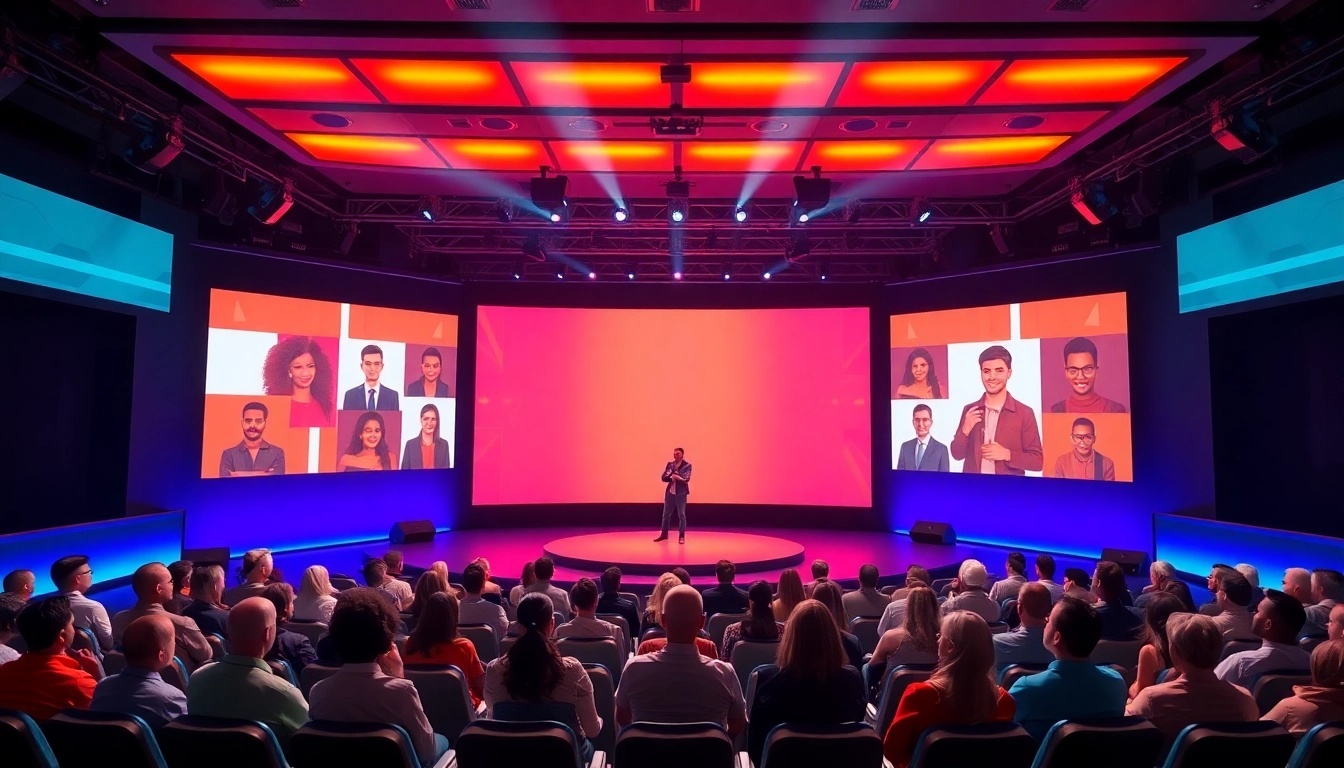Understanding the Virtual Audience System
Definition of a Virtual Audience System
A Virtual Audience System is designed to enhance engagement during events by seamlessly integrating a virtual audience into live or pre-recorded presentations. It utilizes various digital technologies to create an interactive experience that bridges the gap between presenters and participants, regardless of their physical location. This system allows for real-time feedback, question-and-answer sessions, and interactive activities, making it an essential tool for modern event management.
Key Features and Benefits
The benefits of implementing a Virtual Audience System are manifold. Key features typically include:
- Real-Time Interaction: Attendees can participate actively via live chat, polls, and Q&A sessions.
- Analytics and Insights: Detailed metrics about audience engagement are collected, enabling organizers to analyze participation levels and other performance indicators.
- Accessibility: Virtual events can be attended from anywhere worldwide, breaking down geographic barriers.
- Cost-Effective: Reduces the overhead associated with physical venue rentals, travel, and staffing.
- Customization Options: Events can be tailored to meet specific needs, including branding and interactive features to enhance user experience.
Comparing with Traditional Audience Engagement
While traditional audience engagement methods such as in-person events foster face-to-face interactions, they often come with significant logistical challenges and limitations in reach. By contrast, a Virtual Audience System allows for scalable engagements where organizers can connect with a much larger audience. Additionally, the insights gained from audience analytics in virtual settings often surpass those gathered from in-person feedback, leading to more informed decision-making in future events.
Setting Up Your Virtual Audience System
Technical Requirements for Implementation
To successfully implement a Virtual Audience System, certain technical requirements must be met:
- Stable Internet Connection: A robust internet connection is paramount to facilitate real-time interactions without disruptions.
- Video and Audio Equipment: High-quality microphones, cameras, and output devices are essential for clear communication.
- Software Selection: The choice of virtual event platforms should align with your specific needs and desired features, such as video conferencing, chat rooms, or analytics.
- Security Measures: Implement security protocols to protect user data and prevent unauthorized access to the platform.
Selecting the Right Platform
Choosing the correct platform is crucial for the success of your virtual audience system. Popular platforms such as Zoom, Microsoft Teams, or specialized event platforms like Hopin or Whova offer various features. Consider the following criteria when selecting a platform:
- User-Friendly Interface: Ensure ease of use for both presenters and attendees to optimize engagement.
- Integration Capabilities: The ability to integrate with other tools your organization uses (CRM, email marketing, etc.) is beneficial.
- Capacity: Ensure the platform can accommodate your expected audience size.
- Customer Support: Reliable technical support is essential for addressing any issues that arise during the event.
Integrating Tools and Software
Integration of various tools can significantly enhance the functionality of your Virtual Audience System. Popular integrations could include:
- Polling Tools: Integrate tools like Slido or Mentimeter to conduct live polls, quizzes, and surveys.
- Engagement Analytics: Use analytics tools to gather data on attendee behavior, preferences, and engagement levels.
- Social Media Integration: Allow attendees to share their experiences on social media, increasing the visibility of the event.
- Live Translation Services: Integrating live translation features can enhance accessibility for international audiences.
Best Practices for Utilizing a Virtual Audience System
Maximizing Engagement during Events
Engagement is key to a successful virtual event. Here are some best practices:
- Start Strong: Begin with an engaging introduction that sets the tone for the event and encourages participation.
- Utilize Breakout Rooms: Encourage networking and smaller group discussions by using breakout rooms for attendees.
- Incorporate Multimedia: Use videos, graphics, and other multimedia to make presentations more captivating.
- Encourage Interaction: Ask open-ended questions and prompt attendees to share their thoughts through chat or voice.
Creating Interactive Experiences
Incorporating various interactive elements can greatly enhance attendee experience. Consider:
- Gamification: Introduce gamified elements such as leaderboards and challenges to foster friendly competition among participants.
- Live Q&A Sessions: Allow participants to ask questions real-time, providing immediate responses to their queries.
- Networking Opportunities: Choose platforms that facilitate networking and one-on-one meetings to help build connections.
Measuring Audience Participation and Feedback
Evaluating the effectiveness of your Virtual Audience System is essential for continuous improvement. You can do this by:
- Post-Event Surveys: Send out surveys to capture feedback on attendee experience, relevance of content, and accessibility of technology.
- Engagement Metrics: Analyze engagement metrics such as attendance rates, time spent during sessions, and interactions with tools like polls.
- Social Media Listening: Monitor social media channels for feedback and discussions about the event.
Case Studies and Success Stories
Examples of Effective Use Cases
Many organizations have successfully leveraged Virtual Audience Systems to engage their participants. For example:
- Industry Conferences: A major tech conference transitioned online during a pandemic, using a Virtual Audience System to host thousands of participants internationally, maintaining engagement through breakout sessions and Q&A.
- Corporate Training: A global corporation adopted a Virtual Audience System to train employees remotely. They saw a 30% increase in engagement levels through interactive components and polling during sessions.
Lessons Learned from Industry Leaders
Several industry leaders have shared valuable lessons from their experiences:
- Embrace Flexibility: Adapting content based on real-time feedback allows for better audience alignment.
- Prioritize Networking: Offering opportunities for attendees to connect can significantly enhance satisfaction and perceived value of the event.
Analyzing Results and Performance Metrics
Effective analysis of a Virtual Audience System’s performance can yield insights such as:
- Engagement Rate: Monitoring how many participants engaged with polls, Q&A, and chat features provides insights into overall satisfaction.
- Session Attendance: Analyzing which sessions had higher attendance can inform future programming decisions.
Future Trends in Virtual Audience Systems
Emerging Technologies and Innovations
The landscape of Virtual Audience Systems is evolving rapidly. Key trends include:
- Increased Use of AR/VR: Immersive experiences through augmented reality (AR) and virtual reality (VR) are expected to become mainstream in virtual events, offering more engaging environments.
- Advanced Analytics: Enhanced analytics tools will provide deeper insights into participant behavior and engagement patterns.
Anticipating Audience Needs
As technology progresses, so do audience expectations. Organizations must stay ahead by:
- Personalizing Experiences: Tailored content and interaction based on audience interests will foster a more fulfilling experience.
- Focusing on Accessibility: Ensuring that events are accessible to all, including those with disabilities, is no longer just a requirement but an expectation.
The Role of AI in Enhancing Experiences
Artificial intelligence is set to play a pivotal role. This could include:
- Chatbots: Implementing AI-driven chatbots can assist in answering attendee questions in real-time, reducing wait times for inquiries.
- Content Recommendations: AI can analyze individual preferences to recommend sessions and content that align with attendees’ interests.








